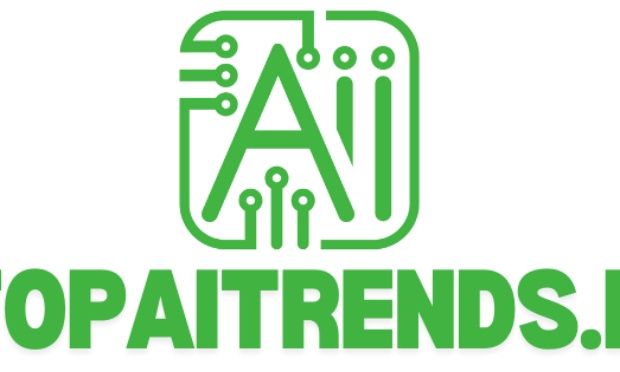Artificial intelligence (AI) continues to revolutionize industries, shape economies, and influence our daily lives. As a leading platform for AI tools and innovations, TopAITrends.io gathers insights from industry leaders, AI experts, and cutting-edge research to predict what lies ahead in the rapidly evolving AI landscape.
In this article, we explore the key trends, emerging technologies, and societal impacts of AI in the future. By leveraging our expertise and data-driven insights, we provide a detailed roadmap of what to expect in the next decade and beyond.
The Rise of Generative AIWhat is Generative AI?
Generative AI refers to AI systems capable of creating content such as images, text, music, and more. Models like OpenAI’s GPT-4 and DALL·E, Google’s DeepMind, and Stability AI are pushing the boundaries of creativity and innovation.
Evidence and Examples
- ChatGPT’s Popularity: OpenAI’s ChatGPT reached over 100 million monthly active users within two months of its release in 2023, highlighting the demand for AI-generated text.
- Art and Design: Platforms like MidJourney and DALL·E are being widely used by graphic designers, marketers, and artists to create original visuals.
Future Implications
- Creative Industries: Generative AI will redefine how art, advertising, and media content are produced, allowing smaller teams to achieve greater creative output.
- Personalization: AI-generated content will enable hyper-personalized marketing strategies, enhancing user experiences.
However, challenges such as copyright infringement and misinformation will demand ethical guidelines and technical safeguards.
AI’s Role in Shaping Future WorkplacesAutomation and the Workforce
AI is expected to automate repetitive tasks, allowing employees to focus on creative and strategic activities. According to a report by McKinsey, up to 30% of jobs could be automated by 2030.
Evidence and Examples
- Customer Service: AI chatbots like Zendesk and Drift are now handling routine customer queries, significantly reducing workload for human agents.
- Data Analysis: AI tools like Tableau with AI capabilities help businesses analyze massive datasets faster and more accurately than traditional methods.
Predictions
- New Job Roles: The demand for AI trainers, ethics consultants, and machine learning engineers will grow significantly.
- Remote Work: AI-powered collaboration tools like Slack’s AI assistants and Miro are transforming how teams work remotely, making virtual offices more efficient.
However, reskilling and upskilling the workforce will be crucial to ensure people remain relevant in an AI-driven economy.
AI and Ethical ChallengesNavigating Ethical Concerns
As AI becomes more pervasive, ethical dilemmas such as data privacy, bias, and transparency will dominate discussions.
Evidence and Examples
- Bias in AI Models: Studies have shown that AI models, like facial recognition systems, often have biases against certain demographic groups. For example, a 2018 MIT study revealed that commercial facial recognition systems had an error rate of 34.7% for dark-skinned women compared to 0.8% for light-skinned men.
- Data Privacy Concerns: Tools like Clearview AI raised alarms for scraping billions of images from social media without consent.
Predictions
- Transparent AI Models: Explainable AI (XAI) will become a key focus, making algorithms and their decisions more understandable.
- Ethics Boards: Organizations will establish dedicated AI ethics boards to oversee responsible AI development.
AI Integration in HealthcareTransforming Patient Care
AI-powered tools are already transforming healthcare through diagnostics, drug discovery, and personalized medicine.
Evidence and Examples
- Diagnostics: AI tools like Zebra Medical Vision and Aidoc are being used to detect diseases such as cancer and heart conditions with greater accuracy than traditional methods.
- Drug Discovery: Insilico Medicine leveraged AI to identify potential treatments for fibrosis, reducing drug development time from years to months.
Predictions
- Telemedicine: AI will enhance virtual consultations by analyzing patient history and symptoms for more accurate diagnoses.
- Early Disease Detection: Predictive analytics will identify individuals at risk of chronic conditions like diabetes and cardiovascular diseases, enabling preventive care.
AI’s Impact on EducationPersonalized Learning
AI is revolutionizing education by providing personalized learning experiences and automating administrative tasks.
Evidence and Examples
- EdTech Platforms: Companies like Coursera and Khan Academy use AI to create tailored learning paths based on a student’s strengths and weaknesses.
- AI Tutors: Tools like Squirrel AI in China offer one-on-one tutoring experiences at scale.
Predictions
- Global Access to Education: AI will make quality education accessible to underserved communities through low-cost digital tools.
- Lifelong Learning: AI-driven platforms will encourage continuous skill development, especially in fast-evolving industries.
The Expansion of AI in Smart CitiesBuilding Smarter Urban Environments
AI is integral to the development of smart cities, enabling efficient energy use, traffic management, and public safety.
Evidence and Examples
- Traffic Management: Cities like Hangzhou, China, use Alibaba’s AI to optimize traffic lights, reducing congestion by 15%.
- Energy Efficiency: Google’s DeepMind cut electricity usage in its data centers by 40% through AI optimization.
Predictions
- Sustainable Cities: AI will drive innovations in renewable energy integration and waste management systems.
- Connected Infrastructure: Smart grids and IoT devices will create highly responsive urban ecosystems.
AI in Climate Change SolutionsFighting the Climate Crisis
AI is being used to model climate patterns, optimize renewable energy systems, and predict natural disasters.
Evidence and Examples
- Climate Modeling: IBM’s Green Horizons initiative uses AI to forecast air pollution levels in cities.
- Wildfire Prediction: AI tools like Descartes Labs analyze satellite imagery to detect wildfires early.
Predictions
- Carbon Capture: AI will improve the efficiency of carbon capture and storage technologies.
- Conservation Efforts: AI-powered drones will monitor deforestation and wildlife populations.
Predictions for AI RegulationsBalancing Innovation and Oversight
Governments and organizations will need to strike a balance between encouraging AI innovation and implementing safeguards.
Evidence and Examples
- EU AI Act: Europe’s landmark legislation categorizes AI systems based on risk, setting a precedent for global regulations.
- US Blueprint for AI Bill of Rights: The United States is exploring a framework for protecting citizens from harmful AI applications.
Predictions
- Global Standards: International organizations like the UN may establish global AI guidelines to ensure consistent ethical practices.
- AI Audits: Regular audits of AI systems will become mandatory to ensure compliance with ethical and safety standards.
Conclusion
The future of AI is full of possibilities, from transforming industries to addressing global challenges. However, its evolution will require careful navigation of ethical, societal, and regulatory landscapes. At TopAITrends.io, we are committed to staying at the forefront of AI innovation, providing insights, tools, and resources to help you thrive in this exciting era.
As we look ahead, it is clear that AI will not only enhance how we work and live but also redefine the possibilities of human potential. Stay connected with us to explore the trends and innovations shaping the AI landscape.





















